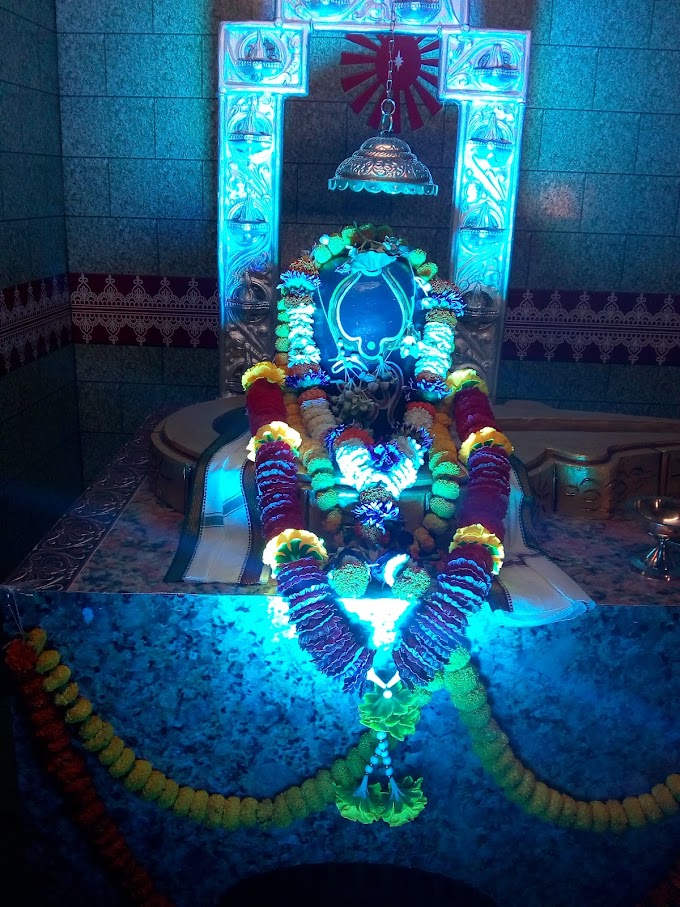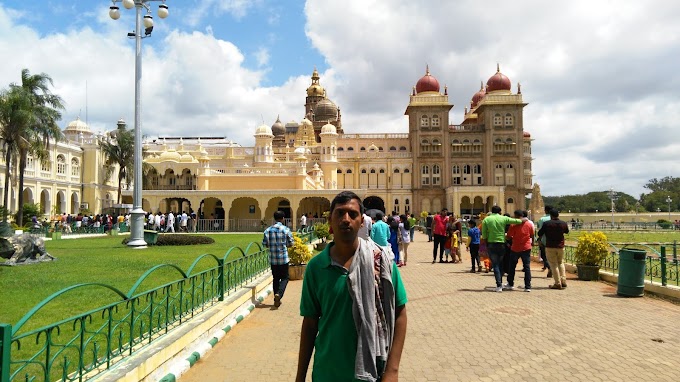MANIFESTATION OF MAA
DURGA IN INDIAN CULTURE: DURGA PUJA
Maa Durga is the part of Maa parvati
and is known as the primary Hindu Goddess of war, Strength and protection. The
word “DURRGA’ which means Impassable, unassailable. According to Alain Danielu Durga
which means “ beyond defeat”. The Veda is one of th important book for Hindu
Religion. In Vedic literature mainly Rigveda, the word Durga has used. And the
word “Durga” also used in ancient post Vedic Sanskrit Taxts such as Ramayana
and Mahabharat.
Durga is the most
popular Goddess, out of the nine main manifestations of Shakti. She embodies
the power that destroys the demons. She is the fierce and protective mother
Goddess, willing to unleash her anger against the evil and liberates the
oppressed. This sculpture of Durga is thought to be one of the Navadurgas
(nine-Durgas), as it is difficult to identify her form very precisely.
There are two type of
Durga Puja one is celebrate on temple and another is celebrate by way of
creating the murti (statue). There have only difference is that to worship Maa
Durga. Who are worshiping Maa in temple they are not worshiping the Murti. Here
worshiping mean the sixteen numbers of day and its specialty.
STORY OF MAA DURGA
AND DEVIL MAHISA SURA
Mahishasur's
father Rambha was the king of demons and once he fell in love with a buffalo.
It is said that the arrival of Mahishasura came from this yoga. Mahishasur was the grate devotee of Lord Brahma. Mahishasur worship to lord Bhrama for fulfilling his wish. After a long years
of Meditation (charting the mantras of lord brahma) by Mahishasura, Brahma was finally pleased and
appeared before him and offered him a wish. Mad with power and ego, Mahishasura
demanded immortality. His wish was that he should not be killed by a "man
or animal" on the face of Earth. Brahma granted him this wish, and then
told him that a woman will be the cause of his death.
Mahishasura believed that there was no
woman in the world who would be the cause of his death. The legend continues,
Mahishasura, high on the power of "immortality", attacked Trilok (the
three worlds of earth, heaven and hell) with his army. He even tried to capture
Indralok (the kingdom of Lord Indra).
The Gods decided to wage a war on
Mahishasura but due to Lord Brahma's boon nobody was able to defeat him. The Gods
thus approached Lord Vishnu for help. After considering the situation, Lord
Vishnu decided to create a female form to defeat Mahishasura. But since Lord
Shiva is the god of destruction, they consulted with him. Brahma, Vishnu and
Shiva combined all their powers together to give birth to Maa Durga.
Maa Durga and devil Mahisa
soon met on the battlefield in a terrible clash which shook the mountains. The
problem for Devi was that whenever she tried to strike Mahisa with a fatal blow
he transformed into another creature - from a buffalo to a man to a lion, then
to an elephant and back to a buffalo. At this moment, the goddess pounced and,
straddling the creature, stabbed him in the neck with her trident. At this, the
spirit of Mahisa came out of the mouth of the dying buffalo and Durga finally
killed him by lopping off his head.
|
Goddess- Maa Durga (A Part Of Maa
Parvati) Birth- Emerged From The Water Of Holy Ganga As A
Spirit But Physical Appearance Given By All Gods Together. Weapon- Chakra, Shankha, Trishula,
Gada, Bow And Arrow And Sankha Mount- Lion Aim- To Killed Mahishasura Festival- Durga Puja Day-
Navratri & Bijoya
Dashami Location-Uttar Pradesh, Bihar,
Odisha, West Bengal, Assam, Gujarat, Tamilnadu, Panjab, Andra Pradesh,
Chhattisgarh, Karnataka, Maharashtra & Himachal Pradesh |
In the feminist
Shakti dharma denomination of Hinduism, the supreme deity Mahadevi (Lord Shiva)
manifests as the goddess Mahasaraswati in order to create, as the goddess
Mahalaxmi in order to preserve, and as the goddess Mahakali (Parvati) in order
to destroy. These three forms of the supreme goddess Mahadevi are collectively
called the Tridevi.
In the hindu
mythology described that Mahadevi as ultimate reality in the universe as a
"powerful, creative, active, transcendent female being.
Detailing the ritual
part, Sangeet Natak Akademi stated that Durga Puja marks the sixteen days
worship of the Hindu mother goddess Durga. The worship of the goddess Durga
commences with Mahalaya, the day when Bengali males pay homage to their
forefathers. The celebration ends on the tenth day of Bijoya Dashami when the
idols are immersed in the river. This festival may called as Durga Puja
in the name of Maa Durga, Bijoya Dashami, Dasahara, and every day have
seperate name. The total day of this festival celebration for 10 days but the
special days are started from 6th day of festival.
Ten states in India
and their unique Durga Puja celebrations Navratri celebrations in different
states of India are due to kick-off soon, calling on the people to reassert
their faith in the mercy of Divine Mother Durga and her manifestations. Since
India is a diverse and multi-cultural country, different states have their
share of traditions, rituals, paraphernalia and practices to worship the divine.
In Southern India,
the material used predominantly for murti is black granite, while material in
North India is white marble. However, for some Hindus, it is not the materials
used that matter, but the faith and meditation on the universal Absolute
Brahman. Major Hindu traditions such as Vaishnavism, Shaivism, Shaktism and
Smartaism favour the use of murti. These traditions suggest that it is easier
to dedicate time and focus on spirituality through anthropomorphic or
non-anthropomorphic icons.
For Hindus, the
mother goddess Durga is a very special deity, able to appear in nine different
forms, each of which is endowed with unique powers and traits. Together, these
nine manifestations are called Navadurga (translated as "nine
Durgas").
The sculpture is
historically significant in two aspects –developments in religion and art. The
worship of mother Goddess in India, has been prevalent in India since the
ancient times, with evidence available from the Indus Valley civilization
(3500-1500 BC). The tenet of worship of female energy or Shakti having been
established, its outward manifestation in the form of idols and sculpture was a
natural corollary. The iconographic features of Durga became common throughout
India by about the 4th century AD.
Indian culture
includes the tradition which also includes the all festival observed by Indian irrespective
of cast, religion, sex. Indian culture is vast compared to other nation. we are think that this festival is celebrated by Hindu but when there was no religion during the ancient India, maa was worshiped by every body.










